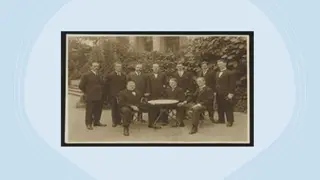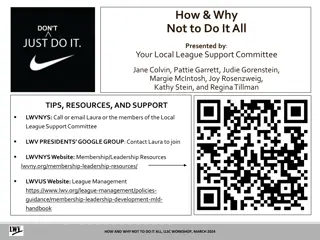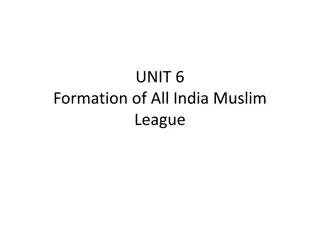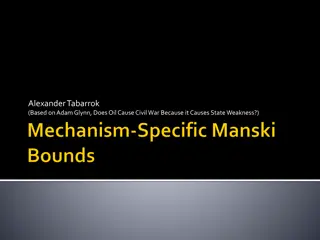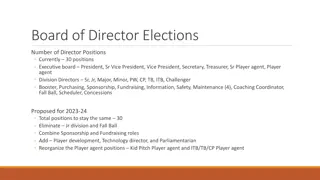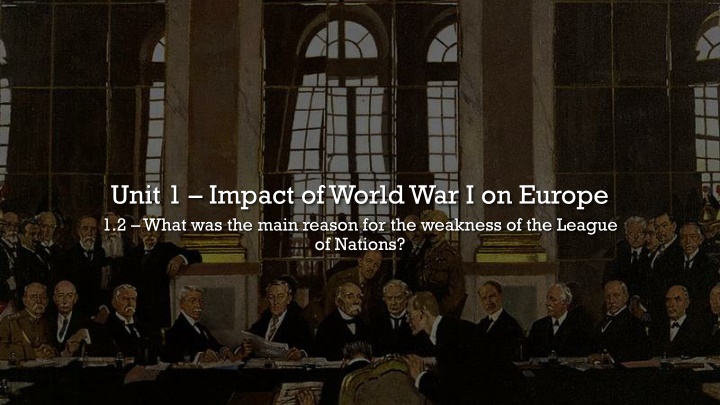
Weakness of the League of Nations
The League of Nations was established in 1920 after World War I to promote peace through collective security measures. However, its main weakness stemmed from a lack of enforcement power due to the absence of a standing army, which hindered its ability to effectively address international conflicts.
Download Presentation

Please find below an Image/Link to download the presentation.
The content on the website is provided AS IS for your information and personal use only. It may not be sold, licensed, or shared on other websites without obtaining consent from the author. If you encounter any issues during the download, it is possible that the publisher has removed the file from their server.
You are allowed to download the files provided on this website for personal or commercial use, subject to the condition that they are used lawfully. All files are the property of their respective owners.
The content on the website is provided AS IS for your information and personal use only. It may not be sold, licensed, or shared on other websites without obtaining consent from the author.
E N D
Presentation Transcript
Unit 1 Impact of World War I on Europe 1.2 What was the main reason for the weakness of the League of Nations?
Origins of the League of Nations The League of Nations was established in 1920. The horrors of World War 1 convinced many leaders, most notably President Woodrow Wilson, that only a League of Nations committed to the collective security of the world could ensure lasting peace and prevent another worldwide war. Although Wilson was the main supporter in the formation of the League, the US never became a member.
Aims of the League of Nations Prevent any aggression by any nation by promoting international cooperation, peace & security Encourage open, just & honourable relations between nations Work towards international disarmament Improve the living and working conditions
Peacekeeping Measures of the League Military Sanctions Impose arms embargo to cut off arms supplies to the offending state. Ability to carry out military intervention. In theory, the League could use military force to stop offending nation. However, it had no army of its own and would depend on the volunteer forces from member countries.
Peacekeeping Measures of the League Arbitration and Peaceful Settlement of Disputes Act as referee by calling nations involved in a dispute to discuss the problem in the Assembly. The League could also issue warnings if the offending nation did not comply with the Assembly s decision.
Peacekeeping Measures of the League Moral Persuasion League s members could come together to publicly condemn the wrongdoings of an offending state. It was hoped that this would persuade or pressure the offending nation to stop its aggressive actions.
Peacekeeping Measures of the League Economic Sanctions These sanctions prevented the exchange of food, goods or supplies between members of League & the offending nation. This way, members of the League would then pressure the offending nation to obey the League s decisions before trade relations could resume.
Peacekeeping Measures of the League Disarmament The League was assigned to organise disarmament plans for members of the League. A special Disarmament Commission would organise disarmament conferences to push for disarmament in each nation.
Successes and Failures of the League of Nations Successful The Aaland Islands (1921) Albania (1920) The Greek-Bulgarian Border (1925) Unsuccessful Vilna (1923) The Ruhr (1923) Corfu (1923) Somewhat Successful Memel (1923) Upper Silesia (1921)
Reasons for the Weaknesses of the League Structural weakness Attitudes of major powers Appeasement and disarmament
Reasons for the Weaknesses of the League Structural Weakness Structural weaknesses in the League include the lack of authority and limited membership. Various parts of the League did not work together and it was hard to take effective action.
Reasons for the Weaknesses of the League Structural Weakness (Lack of Authority) As the Treaty of Versailles was unpopular, the League was inadvertently affected by this unpopularity. Thus, the League lost credibility when it proved ineffective in stopping nations such as Germany, Italy and Japan from their expansionist ambitions in the 1930s. Ineffectiveness of peacekeeping measures as members can leave anytime. Peacekeeping Measure Moral Persuasion Reasons for ineffectiveness Ineffective against strong offending nations. The League did not have an army to enforce military sanctions League members were not willing to get involved militarily Military Sanctions League members did not want their economy to be affected. The offending League member could withdraw from the League The aggressor nation could trade with states outside the League Economic Sanctions
Reasons for the Weaknesses of the League Structural Weakness (Limited Membership) Excluded defeated nations in WW1 did not make it seem as if it focused on peace. 3 world powers were not members. They were the USA, Russia and Germany. (Germany joined the League in 1926). This weakened the League greatly because it needed strong nations as members in order to enforce sanctions effectively. Countrie s Why they weren t in the League Woodrow Wilson could not get the American Congress to pass a resolution to make America a member. Denied membership because of its communist background. Its official policy of world revolution contrasted with the ideals of peace advocated by the League. Germany was denied membership because the Allies held her totally responsible for WWI. USA Russia Germany
Reasons for the Weaknesses of the League Appeasement and Disarmament The post-war attitudes of the major powers affected their willingness to help maintain world peace & security as most of the member states suffered from the impact of WW1. The atmosphere of distrust that remained after the war further affected relations between the powers, contributing towards the League s weaknesses.
Reasons for the Weaknesses of the League Attitudes of Major Powers The French and the British were war-weary and adopted a pacifist policy. France viewed Germany as a near and present danger and was determined that it be contained and kept weak. Italy was dissatisfied with its share of the spoils after WW1 (Abyssinia, 1935). Japan felt it deserved a larger share of the Far Eastern colonies and was increasingly aware of its lack of resources. (Manchuria, 1931) The US adopted isolationism, distancing itself from issues outside America. Hence, the major powers view their concerns and interests as more important than the League s goal of world peace and security.


